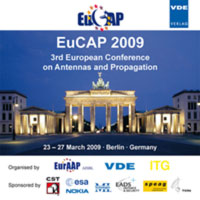Modeling and Comparison of Patch Antenna Configurations for 77 GHz Radar Applications
Conference: EuCAP 2009 - 3rd European Conference on Antennas and Propagation
03/23/2009 - 03/27/2009 at Berlin, Germany
Proceedings: EuCAP 2009
Pages: 4Language: englishTyp: PDF
Personal VDE Members are entitled to a 10% discount on this title
Authors:
Ndip, Ivan; Hirte, Matthias; Guttowski, Stephan; Reichl, Herbert (Fraunhofer Institute for Reliability and Microintegration, IZM, Gustav-Meyer-Allee 25, 13355 Berlin, Germany)
Reichl, Herbert (Technische Universität Berlin, Straße des 17. Juni 135, 10623 Berlin, Germany)
Abstract:
Three patch antenna configurations commonly used for automotive radar applications, namely the conventional, suspended and partially-suspended patch, are modeled, analyzed and compared. This comparison takes into account not only size and performance issues but also considers the robustness of the antennas to process tolerances. Our results reveal that if a low-loss substrate is used, then the partially-suspended patch has a better efficiency, larger bandwidth and gain than the suspended and conventional patch configurations. The conventional patch is much smaller and may be more cost-effective because special technological processes are needed for the fabrication of the partially-suspended and suspended patch configurations. All these three patch antennas respond similarly to changes in geometrical fluctuations which occur because of process tolerances. We realized that fluctuations in patch length of about 10% detune all three antennas because the resonance frequency is shifted completely out of the operating range of the automotive radar.


